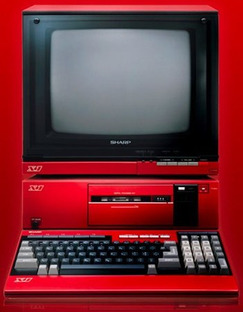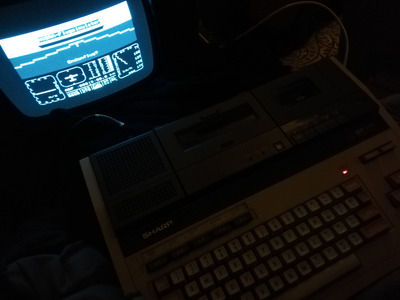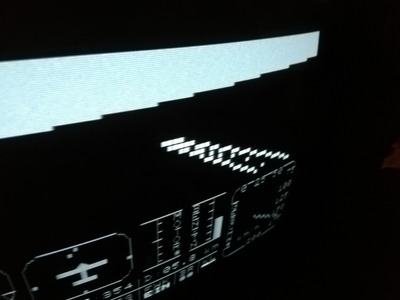I do have had a Japanese computer since my childhood, a Sharp MZ-700 (731).
My father used to have an MZ-80K, too..
Here are some pictures.
https://www.old-computers.com/museum/computer.asp?c=87
http://www.geocities.ws/peterochocki/computer … p/mz700rev.html
https://museum.ipsj.or.jp/en/computer/personal/0004.html
More fitting into this thread is the Japanese market version, maybe, the MZ-1500.
In beautiful black. It kept the keyboard and the basic 700 circuits (which 800 and 1500 improved on separately).
https://monochromeeffect.org/JVCC/2021/01/30/sharp-mz-1500/
Unfortunately, it didn't feature the nice orange keys of the original 700 series model.
Edit: About the computer.. In my country, the Sharp MZ series (80-K/A, 700, 800) was quite popular between the 1978 and 1985 or so.
There was lots of accessory hardware being available at the time.
It was also known in UK, Czechoslovakia, maybe Poland?
Anyway, while the systems may look very primitive judging by the graphics, they were quite capable.
The SHARPSCII character table has 512 symbols to choose from.
Much more than what US ASCII or CP437 (PC/DOS) had to offer.
That's why there are so many text mode games.
ASCII art on Sharp machines was a thing long before it was cool! 😜
The MZs had a Zilog Z-80, a mechanical keyboard and could be upgraded with floppy drives (700, 800 also with QuickDisks).
My father wrote his own floppy controller routines for CP/M,
so he could run it an write serious software for university on this machine.
This was in a time when 8" floppies were still around.
MBASIC, Turbo Pascal, some Fortran..
They all could run on these 8-Bit computers.
To make 80 characters fit on a 40 characters screen, a soft scrolling mechanism was used.
Because, 80x24 really was sort of an industry standard (terminal standard, actually. Line #25 was status on a terminal.)
Oh, and he also did RTTY with that thing.
And attached an acoustic coupler through a homebrewed serial interface.
The hand drawn schematic is still here, if there's an interest in seeing it.
The acoustic coupler was occasionally used to dial into local mailboxes,
but mainly for accessing Datex-P service.
"Time, it seems, doesn't flow. For some it's fast, for some it's slow.
In what to one race is no time at all, another race can rise and fall..." - The Minstrel
//My video channel//


